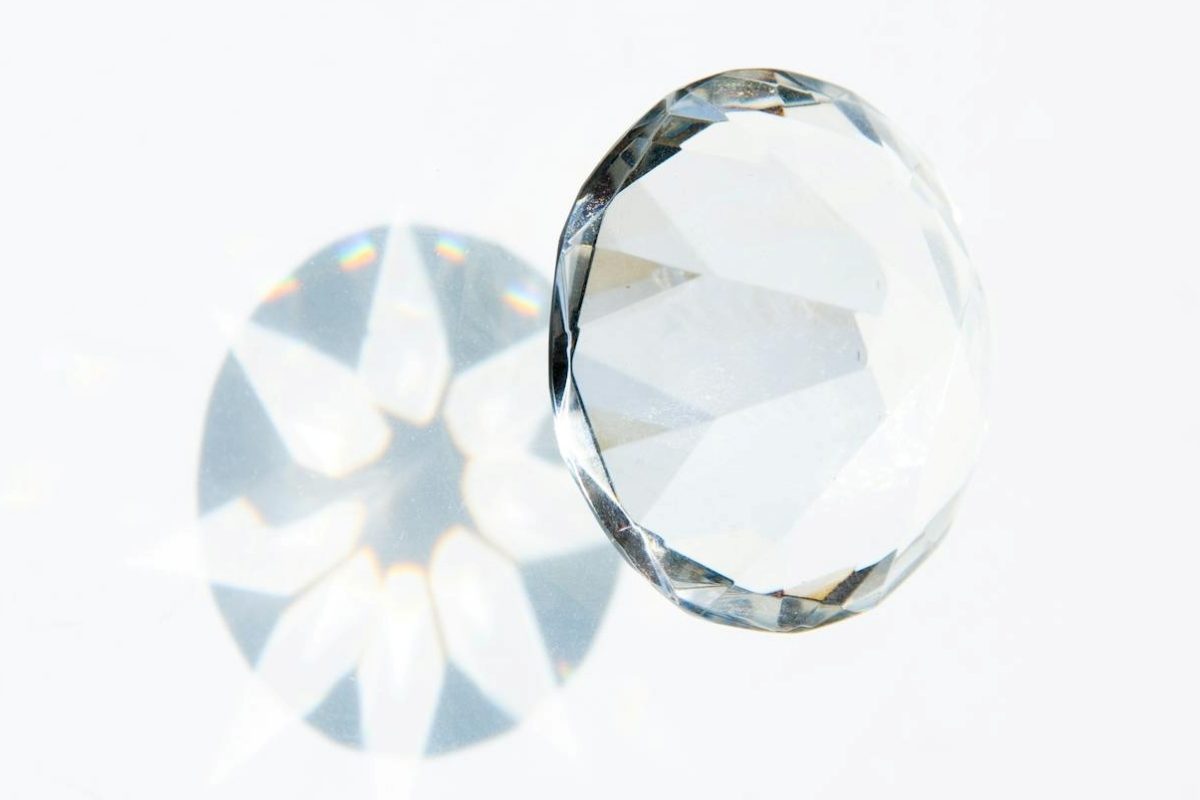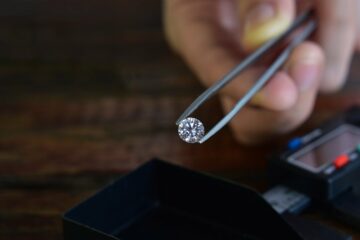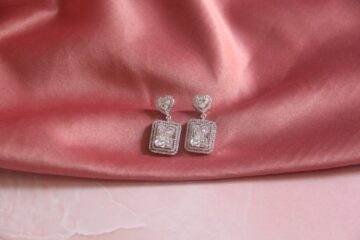- Hidden Connection: Color from Crystal Strain Also Leaves Blemishes
Brown, pink, or orangey tint often originates from plastic deformation within the diamond’s crystal lattice—as opposed to random nitrogen atoms—especially in Type IIa diamonds. These tints arise along specific glide or twin planes, which also produce micrometer‑scale ridges or graining on the surface. These show up as lines, trigon rows, or hazy “waxy” textures even after polishing.
As one GIA gem‑article puts it, plastic deformation lines appear as fine parallel ridges or etch features on facet surfaces—along the same {111} or {100} directions that give the diamond its body color.
- Why Colorless (D‑F) Diamonds Can Be Less Forgiving
Rare Carat high‑clarity, colorless diamonds can ironically make tiny polish lines or scratches stand out, because there’s no hue or inclusion to mask them. As explained by Rare Carat polish‑grading experts: “If you choose Flawless clarity, go for an Excellent or Very Good polish grade. That’s because even minute polish marks are easily visible in a perfect‑looking stone”.
In other words, colorless stones don’t hide blemishes, making polish grade crucial; whereas faint body color can soften the visual impact of light surface imperfections.
| Color Grade | Origin of Color | Surface Flaws Likely? | Visibility to Eye? |
| Brown/Pink (hinted) | Plastic deformation (strain lamellae) | Yes—graining or strain-related polish artifacts | Sometimes visible as haze or lines |
| Colorless (D‑F) | Very few defects, high deposition purity | Polish lines, burn marks, minor scratches | More visible due to contrast |
| Near Colorless (G‑J) | Mild nitrogen tints or early strain | Fewer strain lines; tiny blemishes may exist | Often masked or barely visible |
- Buying Tips
Rare Carat always examines the polish grade, especially in D‑F stones. Even if clarity is flawless, polish can make or break the face‑up beauty.
Watch for comments like “surface graining” or “strain patterns” in brown/pink diamonds. These are barely avoidable in many colored stones, and may carry across girdle or pavilion facets visible with a loupe.
Whenever possible, view high-res, magnified videos or handle the diamond under mixed lighting. That’s the most reliable predictor of whether strain-related blemishes are visually intrusive—or personality.
CVD lab diamonds sometimes show similar strain belts and polishing challenges especially in colorless grades—especially if seed reuse or growth stresses are present. Buyers looking for “F-color, VS clarity CVD” may be surprised by visible strain lines.
If clarity or flawless polish is a priority, yellow/orange diamonds (with nitrogen color) tend to polish better—with fewer graining-related polish imperfections.
- Unexpected but explainable
What seems unrelated—color grade and surface polish clarity—are often two sides of the same gemological coin:
The same formative defects that tint the diamond often influence its surface structure—leaving polish bumps, strain graining, or lines.
Conversely, the absence of color (in colorless stones) makes even the tiniest polish flaw more noticeable.
Cutters must work around the strain planes or risk damage. The same slip planes that cause the pink or brown color tend to show up as fine polish lines or tiny ridges at the surface.
Many pink diamonds are SI or I, not IF—even though their body-color is exquisite—while many yellow diamonds carry fewer internal defects and achieve better polish quality, even if their color grade is lower. Only about 7% of pink diamonds are Flawless or IF.




